Price Change 24h
Market Cap
Circulating supply
Total Volume
All time high
All time low
24h low / 24h high
Current:
Low:
High:
Dominance chart
Fear & Greed index
Now:

How much does bitcoin cost?
The valuation of bitcoin is very dynamic. It changes at every moment, every day. Watching bitcoin live can therefore be an interesting experience - quite different from the familiar stability and relative predictability seen on stock exchanges. Since its inception in 2009, to the present day, - exactly
Although bitcoin is a global cryptocurrency, its prices may vary slightly between different cryptocurrency exchanges and different countries. To always stay up to date with current valuations, be sure to watch the bitcoin live exchange rate.
BTC USD price in 24h Period
Bitcoin costs today which means that in the last 24 hours it has changed its price by .
BTC PLN price in 24h Period
On the Polish market, bitcoin is valued at , which translates to a price change of over the last 24 hours.
Staring at bitcoin charts started to bore you? Join the game and start your trading adventure now!
What is Bitcoin (BTC)?
Bitcoin is a decentralised digital currency whose philosophy was first outlined in a 2008 whitepaper by Satoshi Nakamoto. There is a lot of controversy associated with the pseudonym itself - Satoshi Nakamoto - it could be either a person or a group of people. The only thing we know about Satoshi - he has concealed his true identity perfectly. Since the launch of bitcoin in 2009, the people hiding under this pseudonym have not been found.
Bitcoin is a P2P (peer-to-peer) digital currency, which means that all transactions are carried out directly between equal and independent users of the bitcoin (blockchain) network, located around the world. The fact of decentralisation - the distribution of responsibility and the power to confirm transactions between users of the network, is one of bitcoin's greatest strengths - thus preventing the occurrence of an overarching entity (such as a bank) that could cancel a transaction.

Why did Satoshi create bitcoin? To paraphrase his words:To enable online transactions, sent directly between users - bypassing financial institutions.
There are, of course, earlier projects for decentralised digital currencies that would go on to earn the title of cryptocurrency. Some of these projects have strongly inspired Satoshi. An example of such a currency is HashCash. Nevertheless, it was bitcoin that received the honour of being the first cryptocurrency to be accepted by investors around the world!
How does bitcoin work?
Don't be fooled! Bitcoin is not the shiny coins from photos on exchanges. Unlike gold, its form is not physical - you can't put bitcoin in a real pocket (unless it's in a cold wallet). The nature of bitcoin is a digital world, full of data in blocks (blockchain) and computing power (hash) provided by user nodes (node). This is what bitcoin is, a collection of protocols and processes.
Before understanding how bitcoin works, I must first answer the question:
What is Blockchain?
Blockchain is nothing more than a chain of blocks. Each block is arranged chronologically in the chain and contains a certain amount of information about transactions. The size of the data in a block is 1MB, which translates into about 1600 transactions. Blockchain can be compared to a huge digital accounting system that says - person A sent X bitcoin to person B, who sent it to the next party Y. All user information is of course anonymous, which does not mean that wallet movements cannot be tracked online.
When a block is full, another block is created - thus creating the blockchain. Mining, or creating a new block, takes 10 minutes. Interestingly, the entire blockchain is publicly accessible - you can check what transactions are happening on the network at any time, and even see which wallets they are coming from.
Everything is public, yet bitcoin is famous for its anonymity - where is the catch? Wallet addresses are not assigned to specific users - the location of a bitcoin wallet cannot be traced either.
And what protects bitcoin, the blockchain, its users and holders? Bitcoin is effectively protected by the SHA-256 mixing algorithm, which belongs to the SHA-2 family of algorithms. This family of algorithms is considered to be one of the most secure in the world - currently we don't have the technology to crack this algorithm.
Who Created Bitcoin?
As I managed to mention in the article - all we know about the creator of bitcoin is that he may have been a person or a group of people and took the pseudonym Satoshi Nakamoto. On October 31, 2008, Satoshi published a bitcoin whitepaper in which he described the philosophy of the cryptocurrency and how it works. A few months later, on January 3, 2009, Nakamoto kicked off the first block in the bitcoin network, which we know as the genesis block. This moment - 03.01.2009 we can consider as the beginning of the world of cryptocurrencies.
When talking about the creators of bitcoin, one must also mention the huge community that has improved bitcoin over the years. The creator of bitcoin and the person who contributes to the existence of bitcoin and its idea of decentralised finance, is also every bitcoin owner, thanks to whom the project reaches higher and higher value and crosses new cosmic price thresholds.
What Does the Bitcoin Price Depend on?
Cryptocurrency prices are notorious for being extremely busy. A couple of buy and sell actions are enough to send other cryptocurrency holders into a panic or over-enthusiasm, but what does it come from? What determines the price of bitcoin?
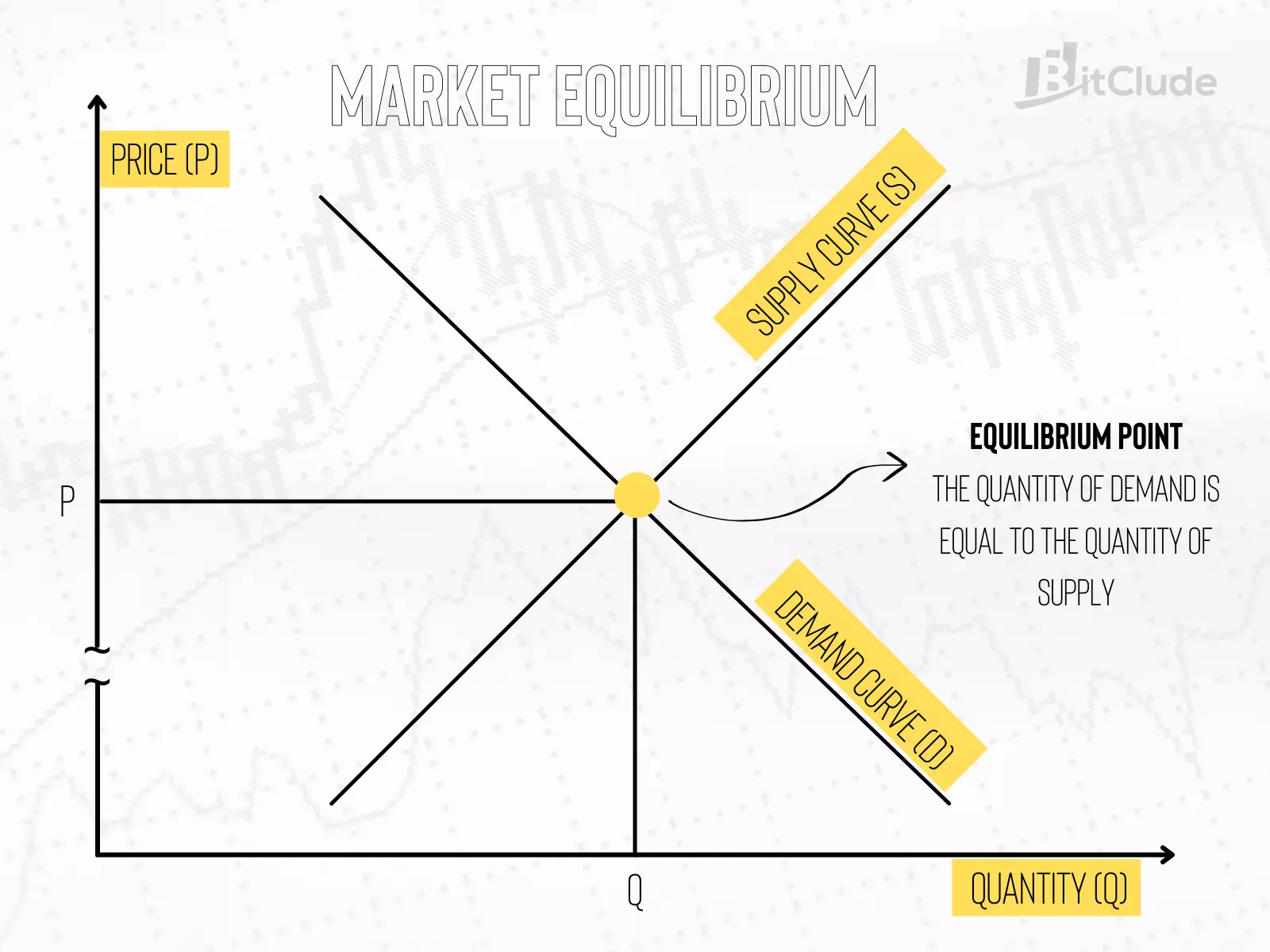
The value of bitcoin and other cryptocurrencies are determined by basic market mechanisms - the laws of supply and demand. This means that we have two groups of people - some want to sell bitcoin, others want to buy it. The groups do not have equal prices - each seller sets his price he wants to pay for bitcoin, and the same is true for the other. In the figure opposite we see a graph that shows the demand curve, the supply curve and the point where the curves intersect - this is the price of bitcoin as traded on cryptocurrency exchanges.
However, bitcoin quotes are still closely linked to two factors - the number of bitcoin tokens in circulation and the cost of mining, which is made up of further factors - the cost of electricity and the specialised electronics needed for mining.
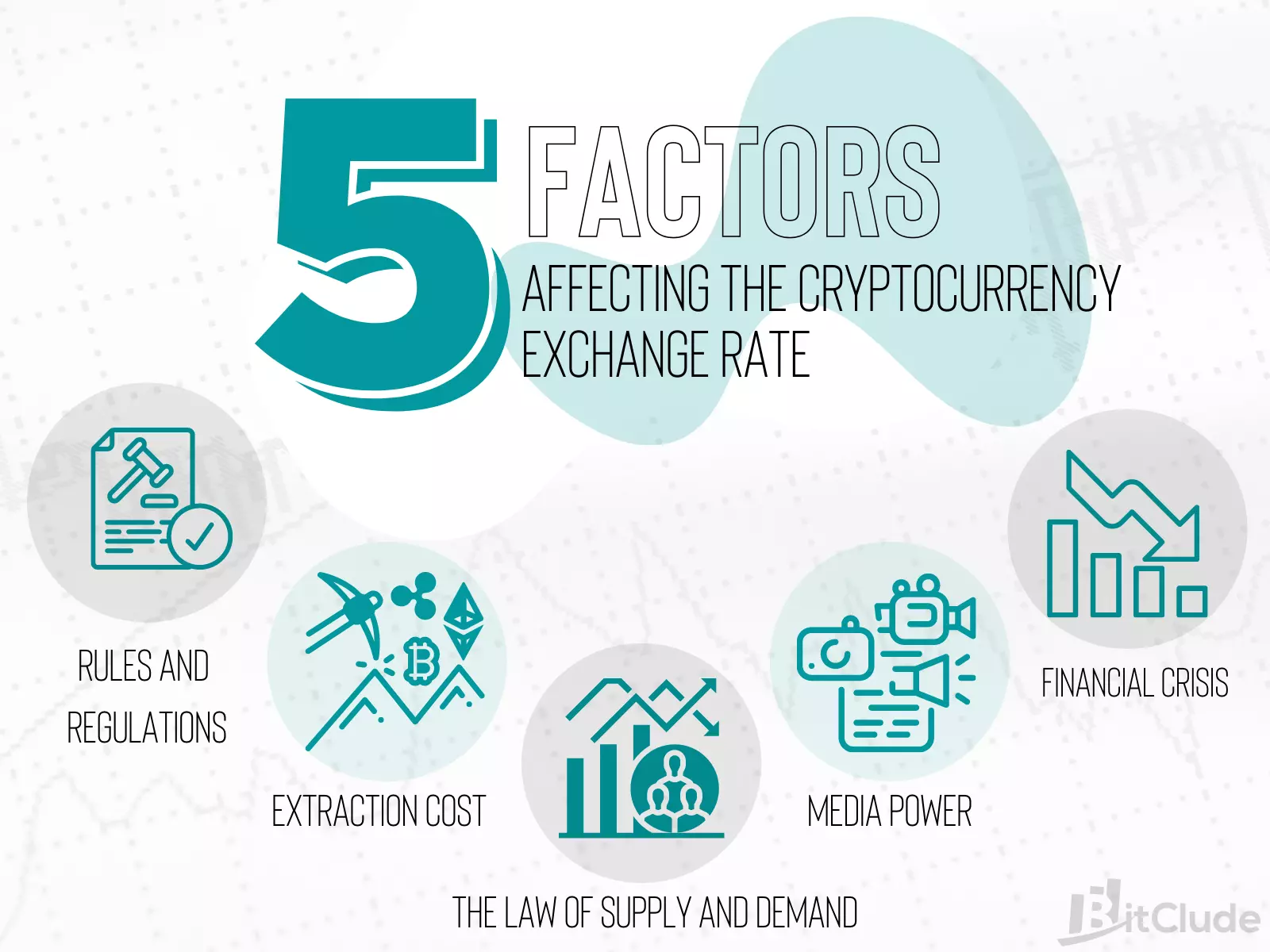
There are also factors influencing buyers and sellers, which can be detailed as follows:
- Manipulations - both increases and decreases are possible as a result. The effect of manipulation is strictly dependent on the target of the subject. The first highly mediaised case of this in the cryptocurrency world occurred in 2017, when John McAfee manipulated the price of various altcoins. Using his authority, he sowed both panic and waves of enthusiasm through simple tweets that ultimately caused huge losses in the alternative cryptocurrency market. Despite growing investor awareness, authority manipulation is still a threatening factor that causes cryptocurrency prices to plummet.
- Politics and government institutions - Cryptocurrencies are intended to be decentralised and anonymous - free from regulation. Precisely for this reason, the topic of regulation has a huge impact on the bitcoin exchange rate. In this case, the main risks perceived by the community are regulations regarding anonymity, mining or taxation of cryptocurrencies. However, this factor is not unequivocally negative - positive information, such as those about the acceptance of bitcoin or the implementation of cryptocurrency technological solutions for the needs of governments, causes intense enthusiasm, which is immediately visible on the cryptocurrency market - the price and trading volume of funds on exchanges increases.
- Quantity of currency in circulation - most cryptocurrencies, unlike fiat currencies, have a strictly defined supply. This is no different, bitcoin's exchange rate is closely linked to its quantity, which you will read about below.

What is the Supply of Bitcoin?
The supply of bitcoin is strictly limited. A maximum of 21,000,000 units of this cryptocurrency can be dug up. Which does not mean that this amount of bitcoin will ever be traded on the market.
What is this due to?
Bitcoin is secured with a very strong cryptographic algorithm - SHA-256, which means that a locked
wallet cannot be opened except with a private key. In theory, obtaining the private key is possible based on the wallet's address and its public key. In practice, the computing power needed to obtain private keys through reverse engineering will be unobtainable for decades to come, although it is very likely that SHA-256 will never be cracked.
What does reverse engineering and wallet breaking have to do with bitcoin supply?
It is estimated that up to 3,700,000 bitcoins are irretrievably lost. To lose a bitcoin all you need to do is lose your private key - in which case you can't just press remind password
. This is why, when the bitcoin exchange rate is soaring, the media always report on investors who, after forgetting about the digital asset for a long time, cannot find their wallet disk or private key.
Where Do Bitcoins Come From - What Does It Mean to Mine Bitcoin?
In the process of digging bitcoin (BTC), the most important actors are the miners, who can be likened to auditors who approve transactions. As you already know, the bitcoin network is decentralized - meaning there is no single entity that has the power to approve or reject transactions. For a transaction in bitcoin to go through, it must be approved by a certain number of independent nodes (miners). The presence of miners is necessitated by the lack of a central controlling authority to prevent the problem of double spending.
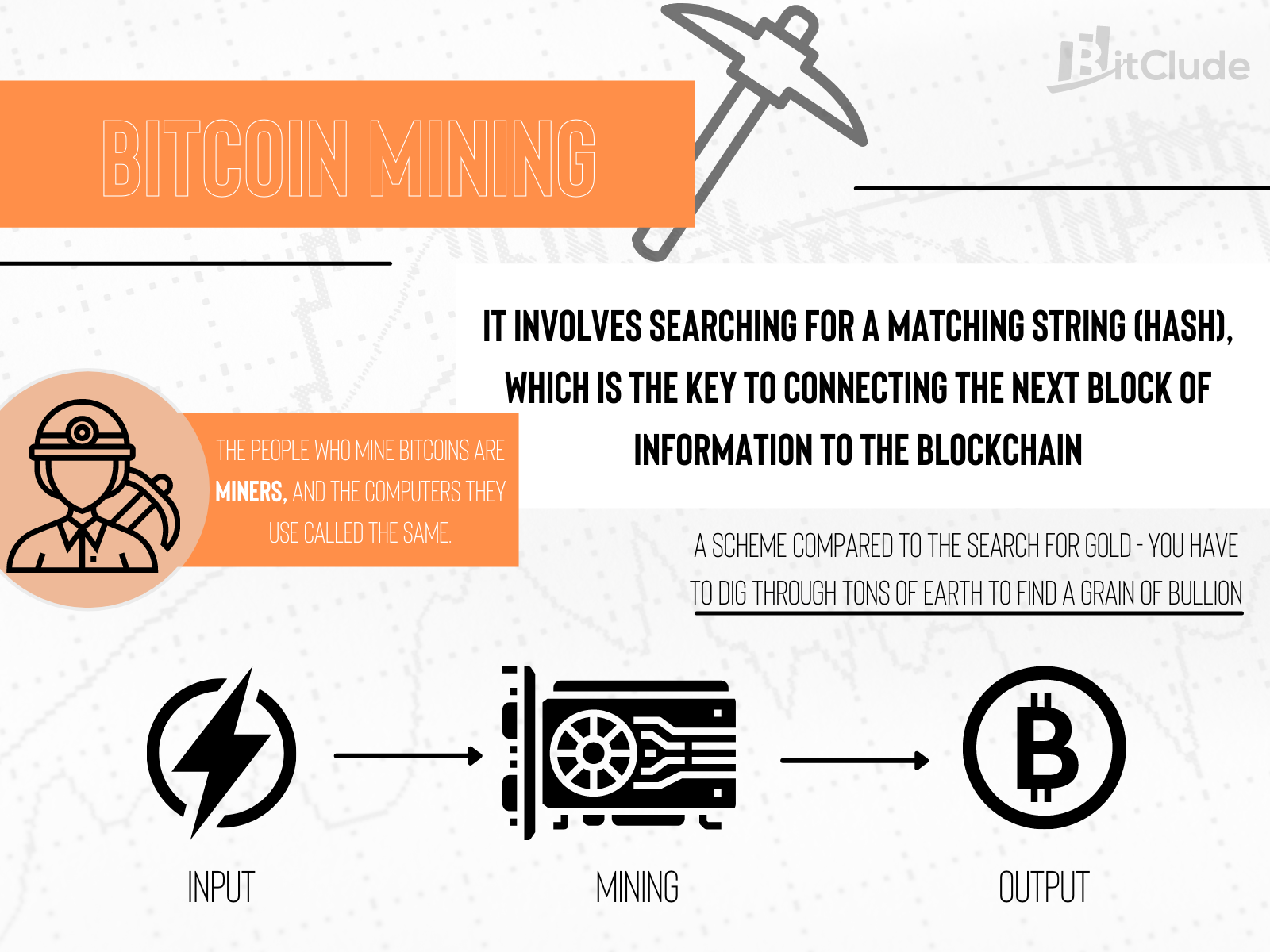
The miner, for work done (confirmations) receives commissions (fees), but this commission, is not new bitcoin - it is a fee incurred by the transferor.
Where do new bitcoins come from?
To receive the prize - a new bitcoin, two conditions must be met:
- Miner must verify transactions of approximately 1MB;
- Miner have to be the first miner to provide the correct answer, or the closest answer, to a mathematical problem.
Miners are rewarded doubly - they receive commissions and have the chance to receive a reward for digging a new block. Paradoxically, the reward for mining is one of the stronger internal factors determining the bitcoin price.
How big is the prize?
BTC mining rewards are halved every 4 years or so. When bitcoin launched, the reward for digging a new block was 50 BTC. In 2012, the reward was automatically halved to 25 BTC, in 2016 the reward was reduced again to 12.5 BTC, and in 2020 the reward amount dropped to 6.25 BTC.
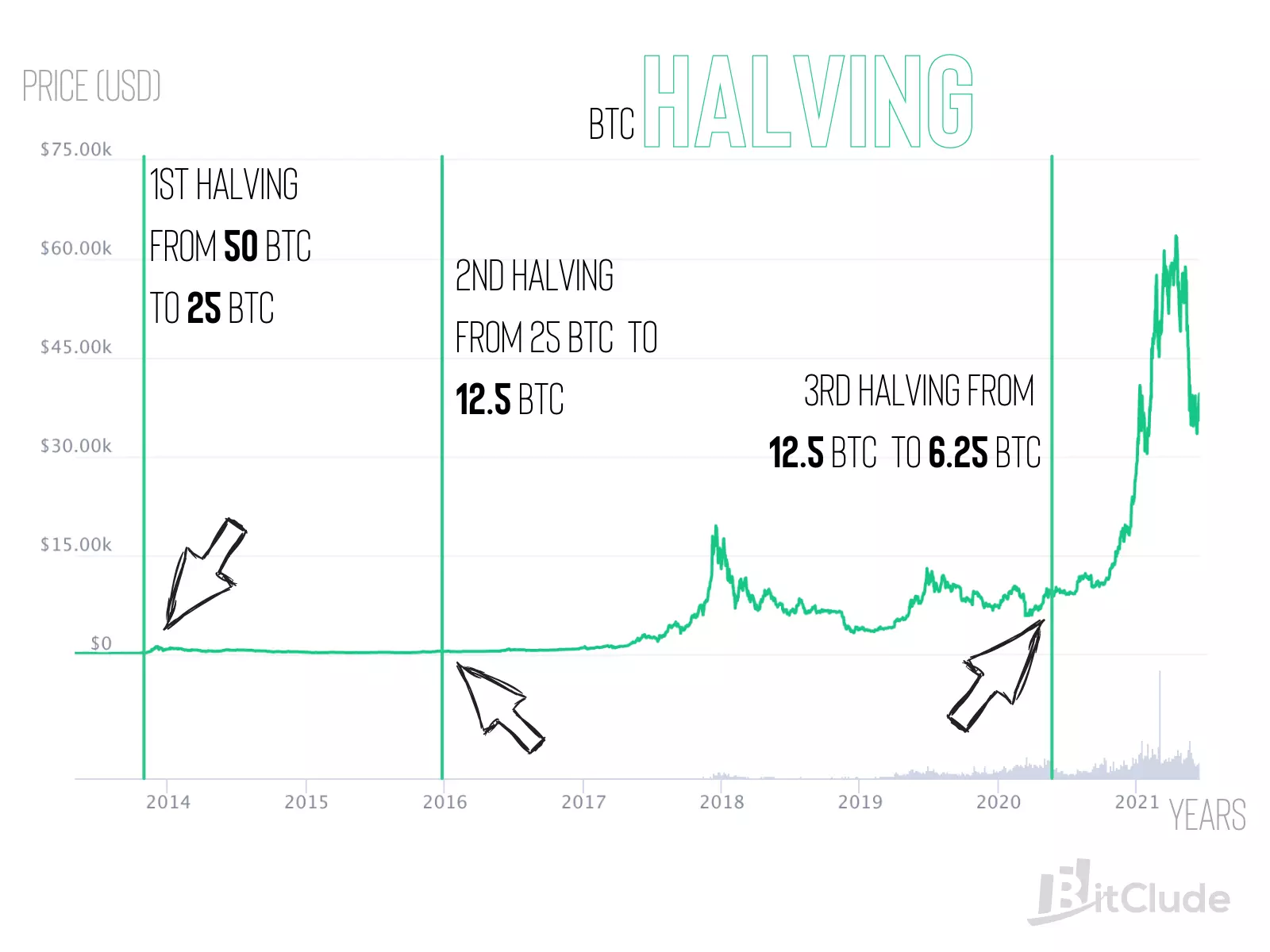
Do you have any associations with these dates? I think you can see some correlation...
What Is Halving and How Does It Affect the Bitcoin Price?
This halving of awards has its own name - halving. It can be called a cyclical event, as it is supposed to occur every 4 years. If you want to track when the next halving occurs, be sure to check out this page.
The aforementioned halving dates (2012 / 2016 / 2020) are of exceptional importance, each prize split resulted in a significant increase in bitcoin's price in the near term. The bull markets of 2013, 2017 and 2020 - all closely linked to halving. The next catch is likely to be in the first quarter of 2024.
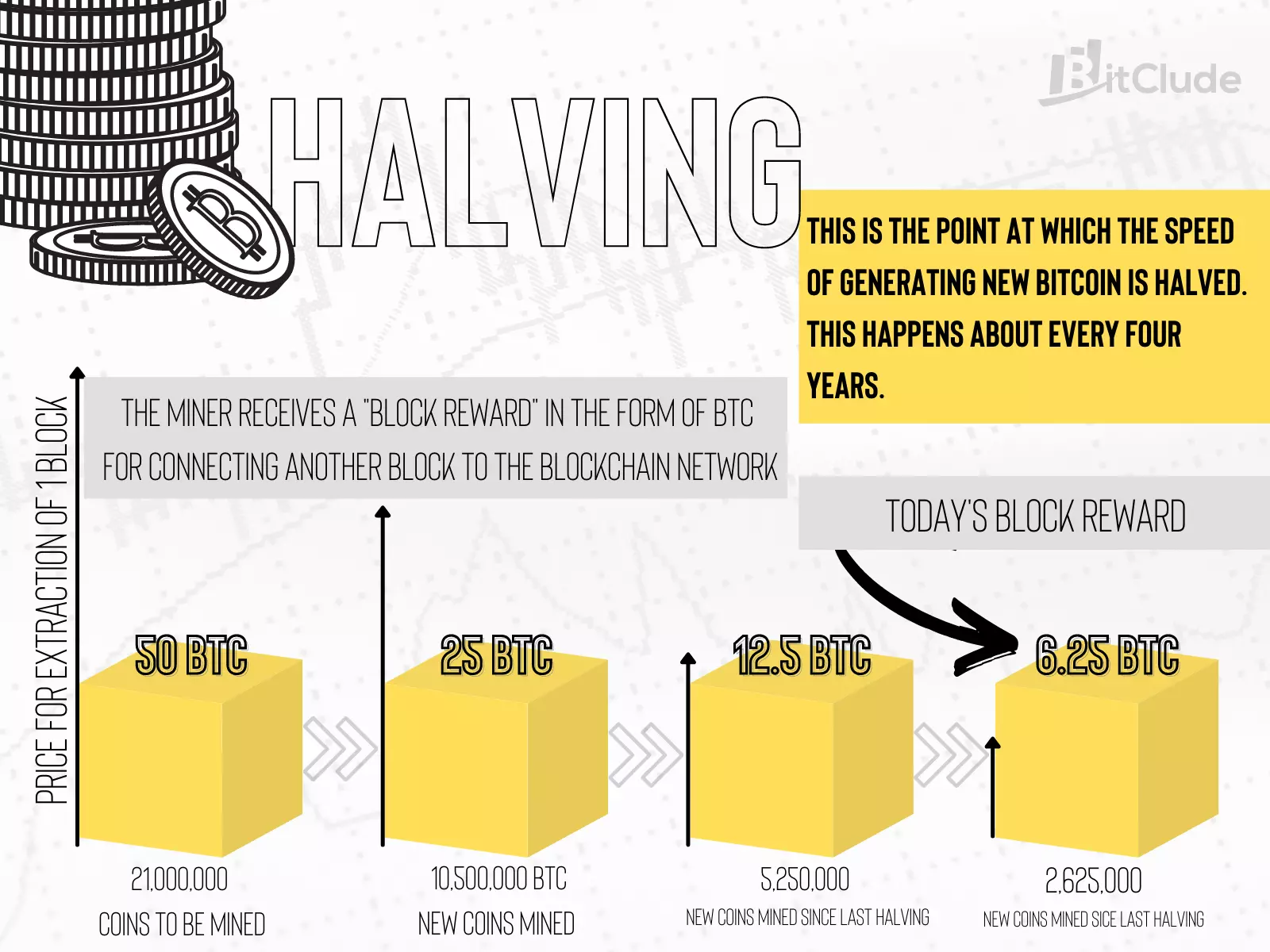
Why is Bitcoin so expensive?
Looking at the bitcoin exchange rate from the beginning, we can see gigantic increases. Over a period of 11 years (2010-2021), bitcoin has multiplied its value 47 296 000 times! We would like to remind you that bitcoin is currently trading at around 30 000 - 40 000 USD while 11 years ago its price started at 0.0008 USD.
Many factors contribute to bitcoin's high price. First of all, it is the oldest and most popular cryptocurrency, the precursor of the currently known technologies available on the digital currency market. On the other hand, bitcoin's price is also due to its deflationary nature - its supply is predetermined at 21,000,000 tokens, but as you already know, such an amount will never be traded by lost units of this currency.
Bitcoin is also a cryptocurrency very much embedded in current reality. It was adopted by PayPal in 2020, with tech giants such as Tesla and MicroStrategy taking an interest in the first quarter of 2021. Bitcoin has also won the confidence of investors by creating its current utilitarian value to gold - i.e. it has become a store of value, or rather it has started to be perceived as such a store, as it has not changed its technical properties.

The high price of bitcoin (btc) is also dictated by the huge interest of investors, who are increasingly willing to see cryptocurrencies as a valuable asset in their investment portfolio. Increasing demand meeting decreasing supply causes the intersection of the curves to shift, which translates into an increase in the price of bitcoin.
What is the Lightning Network?
Lightning network is a network embedded on the blockchain, it is an off-chain solution, also known as second layer
. The main function of the Lightning Network is to allow transactions to take place without having to record each transaction on the blockchain. The LN has its own nodes, meaning it is completely independent of the bitcoin network, although it communicates with its main chain.
Unlike blockchain, Lightning Network is scalable with the number of transactions. Unlike traditional cryptocurrency transfers such as bitcoin, transaction costs will not increase as the network becomes overloaded. This sidesteps the problem of very high transaction fees on the bitcoin network, where fees can be as high as $50 at the peak of investor interest.
An advantage of the Lightning Network, is also a higher level of anonymity than with traditional bitcoin fund transfers. An outside observer can only see the open channels between the parties, but can no longer pinpoint what transactions are taking place inside the LN channels.
Wallet for Bitcoin
Storing cryptocurrencies can be problematic, which is why every bitcoin HODLER, should know the basic breakdown of cryptocurrency wallets. What is the difficulty in storing bitcoin? Unlike fiat currencies, you can't just put bitcoin in your sock - storing it requires specialized software or special hardware. Cryptocurrency wallets are divided into two basic types:

Cold Wallet
Cold wallets are the safest form of cryptocurrency storage. They are characterised by storing
bitcoin offline. They are not the most convenient form of holding for investors, as transferring funds from this type of wallet to an exchange can take a long time, making it necessary to plan ahead when hitting the sell
button. Today, cold wallets are highly specialised devices the size of a memory stick. Examples of this type of wallet include Trezor and Ledger.
Hot Wallet
Hot wallets are characterised by being constantly connected to the web. They can be either wallets in the form of a computer program, mobile or browser add-on. Investors who frequently trade their funds very often use cryptocurrency exchanges to store funds, thanks to which they are able to react instantly to changes seen in the market. The downside of hot wallets is minimally lower security and vulnerability to external factors.
Do You Have to Buy Whole Bitcoin?
You don't need to buy a whole bitcoin - you don't need to spend $30,000 at the start of your cryptocurrency investing adventure. Bitcoin is divisible into 8 decimal places, or 0.00000001. This smallest unit is called Satoshi and is the equivalent of a penny. With such a high divisibility, bitcoin has great potential for use in micropayments and even with the astronomical rise in the value of the cryptocurrency.
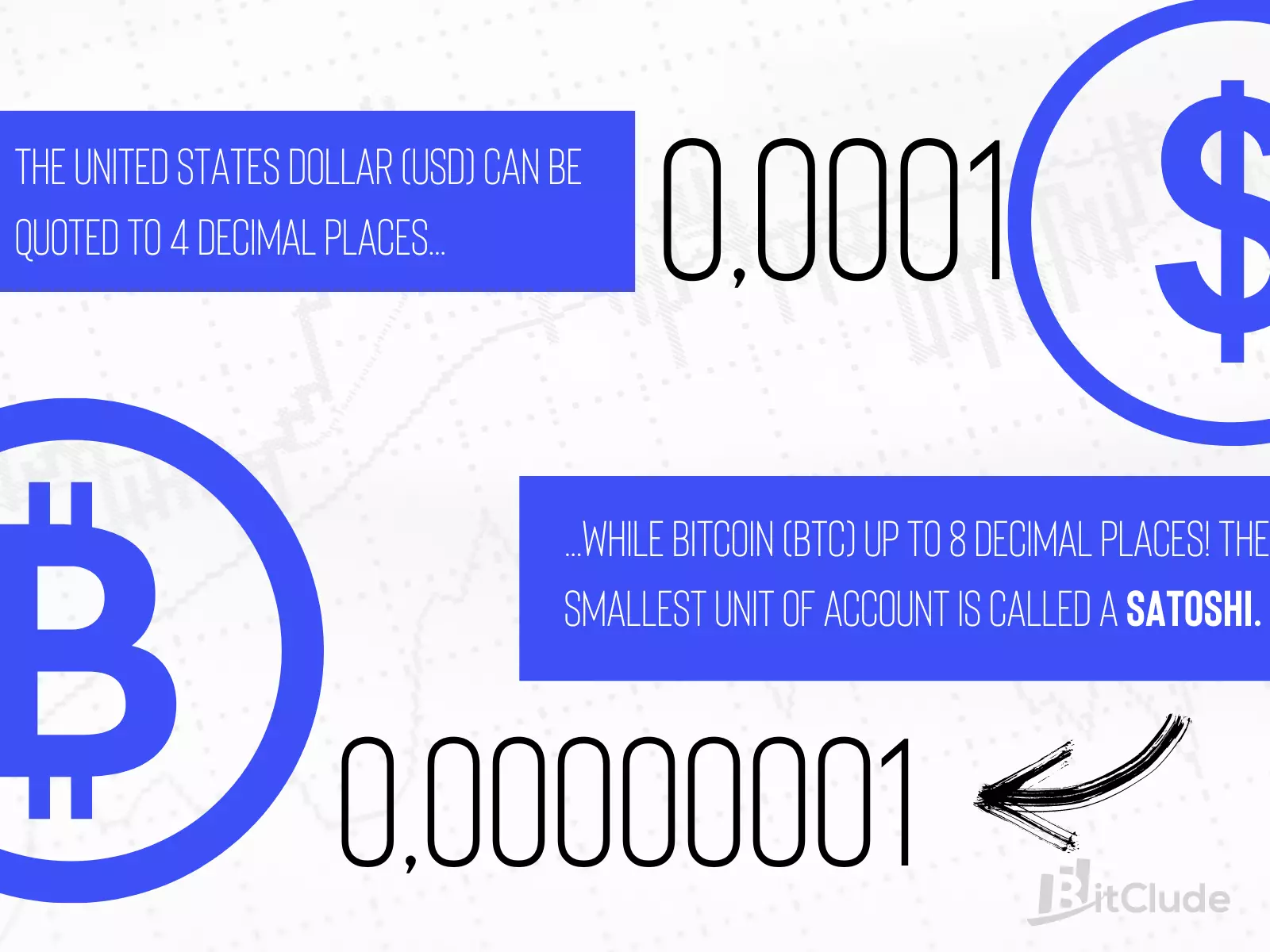
Is Investing in Bitcoin Safe?
Investing in bitcoin is no riskier than investing in any other type of asset. However, when investing your funds, remember that bitcoin is one of the busiest assets in the financial world. To avoid the risk of losing money, invest only the money you can lose.
Before you decide to make any investments, gather as many answers as possible to specific questions raising the topic of bitcoin investment, and then buy it!
Bitcoin or Gold - Store Of Value
Looking at bitcoin from a broad perspective, its value continues to rise. Despite transitional periods in which cryptocurrency exchange rate goes through major corrections, this currency has an unprecedented ability to rebuild its value and break through in a short period of time.

Unlike gold, bitcoin is easier to store - it also has a much greater chance of increasing in value and, most importantly, the supply of bitcoin is strictly limited, which cannot be said of gold.
Cryptocurrency Ranking:
Back to the ratesStart your trading journey right here!
...or just keep calculating prices
Table of Contents




